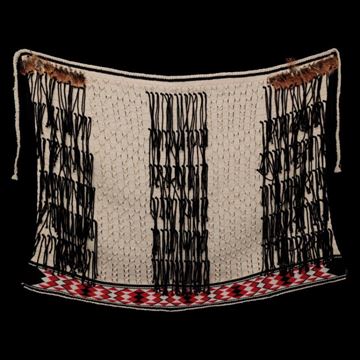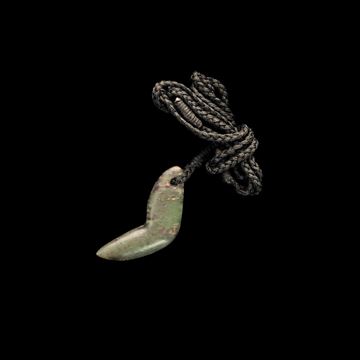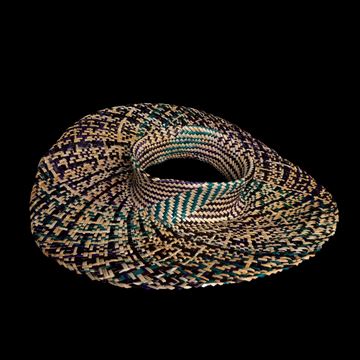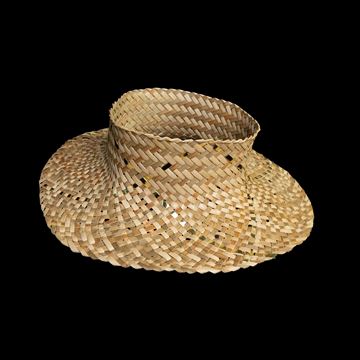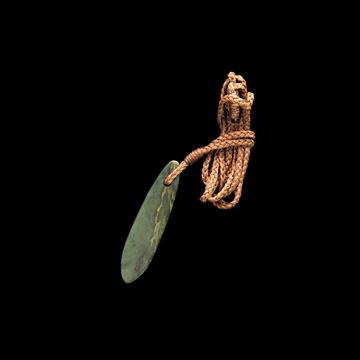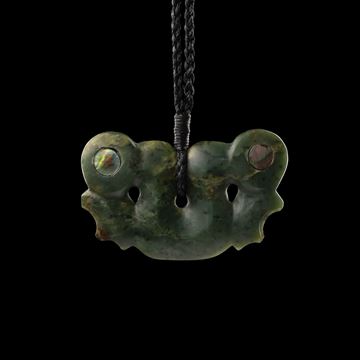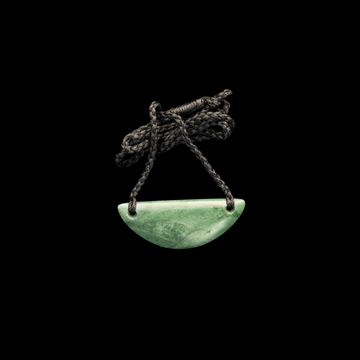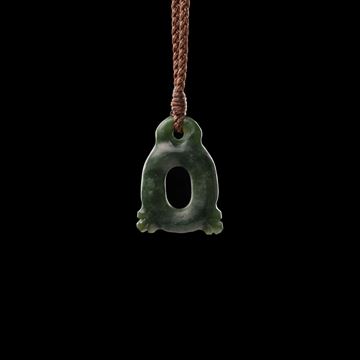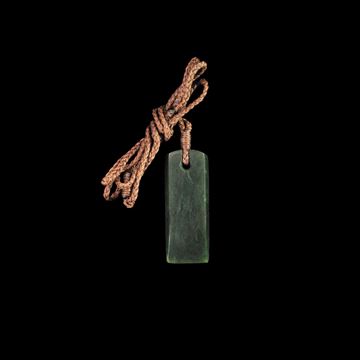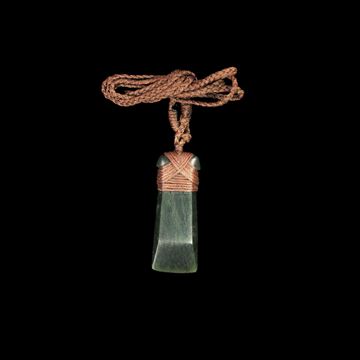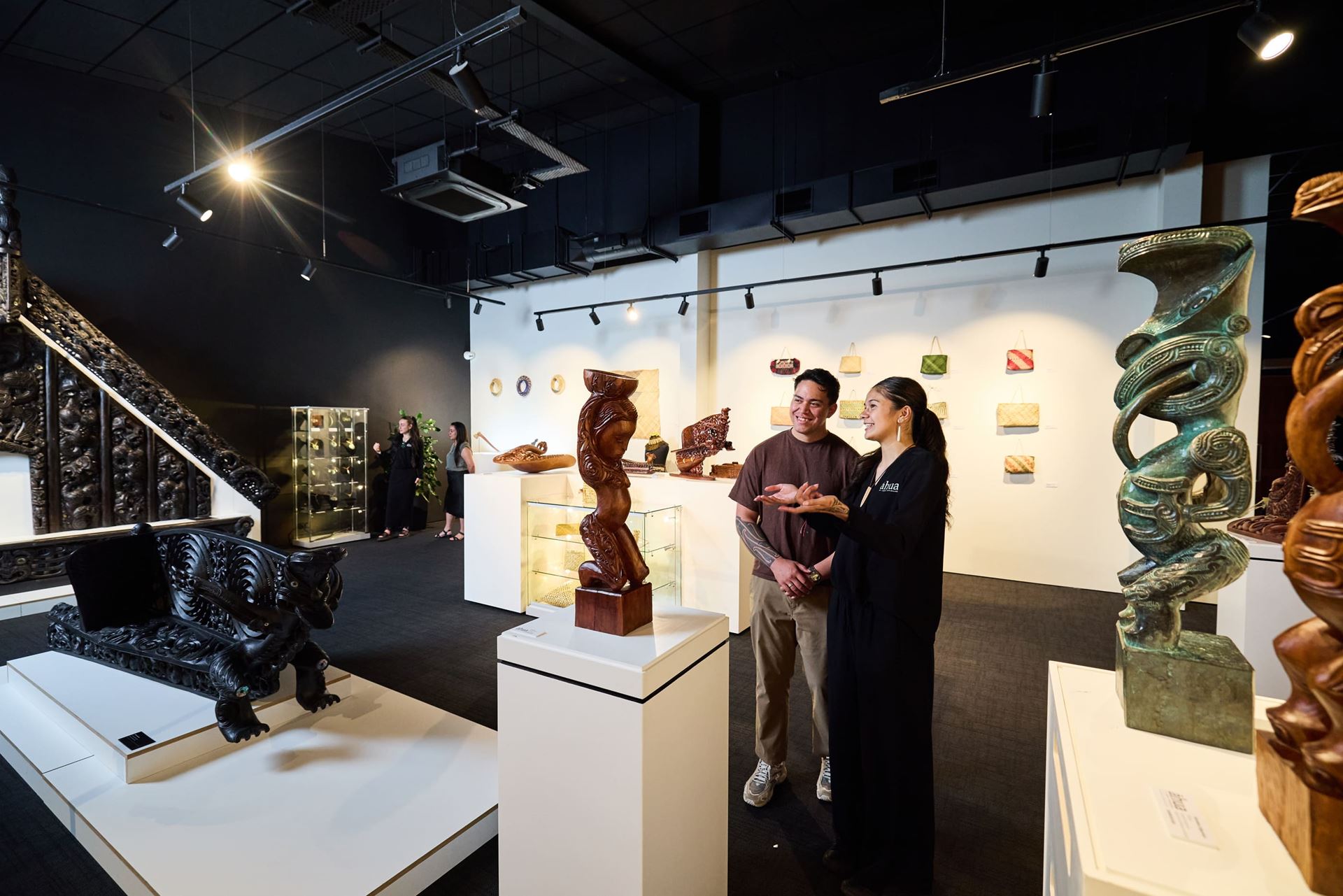
Āhua Gallery
Select Subcategory
Tāniko Belt - 2726TE
Tāniko weaving produces a relatively stiff and unyielding fabric, it was traditionally used as a decorative border on fine cloaks of the kaitaka and paepaeroa types. Often several different strips of tāniko appeared on up to three sides of a cloak.
Material: Acrylic Cotton, Leather Lining, Macrame Silks
Measurements: 1150mm x 40mm
$990.00
Kākahu (Contemporary) - 1630WK
The kākahu takes inspiration from traditional Māori cloaks. A kākahu is mantle of prestige and honour. This kākahu is made from mirowhiti miro (mop yarn) also incorporating materials that represent different types of kākahu including but not limited to kahu huruhuru (feathers) and tāniko.
Material: Cotton, Mop Yarn, Wool, Feathers
Measurements: 875mm x 775mm
$3,900.00
Kākahu (Contemporary) - 1731RA
The kākahu takes inspiration from traditional Māori cloaks. A kākahu is mantle of prestige and honour. This kākahu is made from mirowhiti miro (mop yarn) also incorporating materials that represent different types of kākahu including but not limited to kahu huruhuru (feathers) and tāniko.
Material: Cotton, Mop Yarn, Wool, Feathers
Measurements: 1016mm x 762mm
$4,400.00
Pōtae - 6778AY
This Pōtae is a contemporary hat woven with traditional Māori weaving methods.
Material: Harakeke & Metallic Foil
Circumference: 23.5 inches (60cm)
$420.00
Pōtae - 6779AY
This Pōtae is a contemporary hat woven with traditional Māori weaving methods.
Material: Harakeke & Metallic Foil
Circumference: 21 inches (53cm)
$390.00
Kurupapa - 6166KH
This manu (bird) form is a variation of the kapeu which are slender adornments with a slight bend at the bottom and were often worn as ear pendants. This kapeu has been fashioned from pounamu (New Zealand Jade). Kapeu were highly prized and a sign of high rank in Māori society. They are commonly also worn as neck pendants.
Material: Pounamu (Kawakawa)
Measurements: 51mm x 13mm x 2mm
$270.00
Pekapeka - 5694RH
The Pekapeka (native NZ bat) represents the interwoven nature of the spirit world and the world of the living – the seen and the unseen. The bat was interpreted by Māori as a creature who symbolically acted as an interface between the two worlds and whose physiology (which does not possess the gift of sight) appeared to be guided by the ethereal and the metaphysical.
Material: Pounamu (Kawakawa)
Measurements: 60mm x 35mm x 8mm
$1,100.00
Mourei - 6168KH
The breastplate represents strength, serving as a shield and offering protection.
Material: Pounamu (Kawakawa)
Measurements: 46mm x 19mm x 6mm
$290.00
Pōria Kākā - 5497MA
Pōria Kākā are leg rings crafted from bone or stone used to keep pet kākā (parrots) from flying away. The giant kaka parrot was used by the Māori to assist them during hunting. The bird was used as a decoy to capture other kaka parrots.
As with many Māori items the kaka ring was both used as a tool as well as an adornment.
Material: Pounamu (Kawakawa)
Measurements: 35mm x 25mm x 4mm
$450.00
Toki - 6179KH
The toki pendent is based on the form of the carving chisel used in whakairo (Māori carving).
Material: Pounamu (Kawakawa)
Measurements: 50mm x 19mm x 6mm
$450.00
Toki - 6180KH
The toki pendent is based on the form of the carving chisel used in whakairo (Māori carving).
Material: Pounamu (Kawakawa)
Measurements: 50mm x 19mm x 7mm
$490.00



